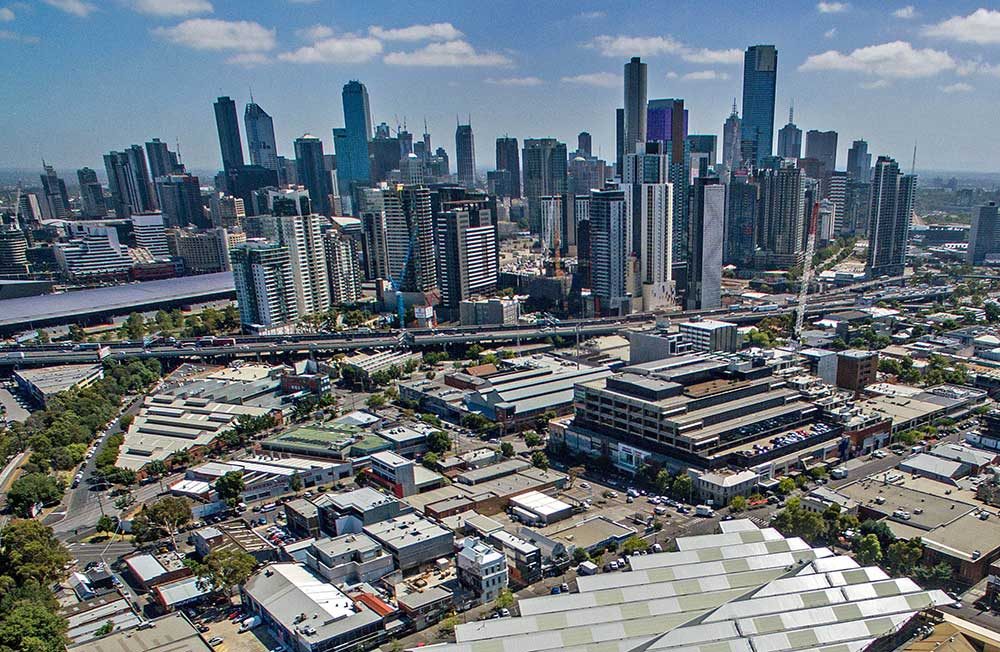This article is from the Australian Property Journal archive
DESPITE a surge in new space, the Melbourne CBD vacancy rate fell to 3.2% – its lowest level in a decade, as tenant demand shows no signs of abating and the city is running out of space to lease.
The latest Property Council report shows Melbourne’s CBD office vacancy rate declined from 3.6% despite the addition of 98,758 sqm during the last six months and 42,134 sqm was withdrawn.
PCA Victorian executive director Cressida Wall said the strength of the office market is driven by strong demand – reflecting Victoria’s strong economic fundamentals, population growth, liveability and comparatively affordable rents.
Key lease deals in 2018 included NAB for 65,000sqm at 405 Bourke Street; Energy Australia for 22,000sqm at 697 Collins Street; Cbus Super for 9,600sqm at 130 Lonsdale Street; and the Australian Financial Complaints Authority for 7,600sqm, also at 130 Lonsdale Street.
Savills’ state director for office leasing Mark Rasmussen said the dramatic falls in office vacancy rates throughout the past two years are becoming more gradual, as Melbourne moves towards a vacancy trough at the end of 2019.
“We simply do not have the space to lease,” Rasmussen said, and he predicts the vacancy rate will sink to mid 2% by the early 2020s, and A-grade vacancy will be significantly lower.
“At the coalface of the leasing market, we feel the frenetic pace of the Melbourne economy will slow with the looming federal election, the expected change of government, the reduced availability of credit, and the geo-political challenges across the globe.
“Despite these challenges, tenants with leases expiring in 2019 are faced with a lack of options and continued high rental growth, which has been close to 10% per annum these past two years,”
Rasmussen predicted that despite the recent sharp increases to rental rates, the higher base would become the new normal, “as Melbourne finally starts to catch up with other Australian capital city rents”.
JLL’s Victoria head of office leasing Stuart Colquhoun also predicts rental growth to continue strongly in 2019; with limited supply and strong demand continuing, new entrants are likely to look at non-CBD alternatives where availability exists.
“Centralisation is likely to slow in 2019 with Melbourne CBD office projects becoming harder to activate and fringe office supply accelerating. In 2019, a total of five new CBD office buildings are expected to deliver a total of 172,400 sqm to the market, however a mere 11% remains available and is quickly being absorbed.
“A number of projects have commenced construction and many others have potential to activate quickly. Richmond, Cremorne and, more recently, Collingwood are becoming office development hot spots. With 136,320sqm of space currently under construction in the fringe, only 42,400sqm (31.1%) has been pre-committed across seven projects offering well-valued new buildings to tenants seeking large floorplates and world-class facilities.
“In 2018, the most significant change in enquiry was seen in the 2,000sqm-plus category, with over 100,000sqm more demand in this category compared to 2017. With 74% of CBD buildings under construction already pre-leased, larger tenants seeking space will be limited with CBD options and likely to look at suburban and metropolitan alternatives.” Colquhoun said.
Colliers office leasing national director Andrew Beasley said options for tenants in 2019 seeking in excess of 5,000sqm can be counted on one hand and he expect a severe undersupply moving into 2020 and beyond.
“Demand side fundamentals remain very strong. We have not experienced a sustained period of low vacancy ever before – with not only the CBD but the fringe market being very tightly supplied. Colliers own vacancy data shows that the city fringe vacancy rate is 3.7%. We are certainly in the midst of a unique supply/demand imbalance in Melbourne, which is traditionally well supplied.” Beasley said.
Wall said although low vacancy rates show the strength of the office market, concerns is growing about the looming supply shortage to meet demand beyond 2020.
“To 2021, Melbourne CBD will supply over 480,000 sqm of new stock. Pre-commitments for this future stock sit at over 55%,”
She pointed out that only two commercial developments have been approved against current C270 planning controls since their introduction over two years ago.
“The Melbourne CBD is forecast to grow from 317,500 to 480,400 workers, resulting in a projected need for an additional 4.4 million sqm of commercial floorspace, by 2036.
“A steady and continued supply of high quality commercial office space is crucial to our continued ability to meet demand. We welcome the government’s announcement that it will review the restrictive and inflexible C270 planning controls and call for this to occur as a matter of urgency,” Wall concluded.
Australian Property Journal




